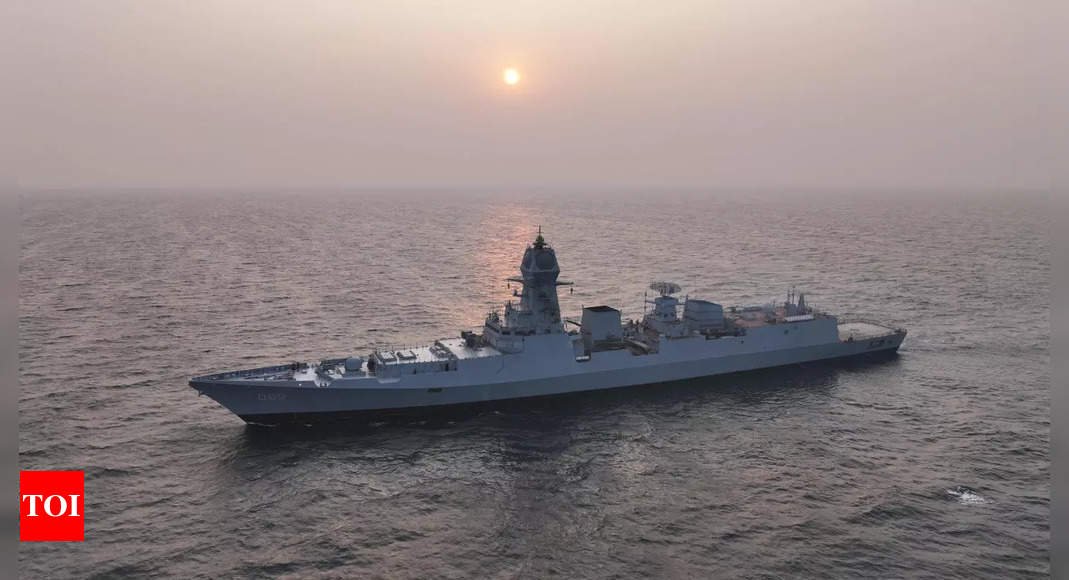NEW DELHI: India on Wednesday made a major achievement as the Indian Navy increased its prowess following the addition of three indigenously made warships (two warships and a submarine) to its fleet. The commissioning of the indigenous vessels highlighted India’s growing military manufacturing capabilities.
The move is seen as a strategic response to China’s growing influence in the Indian Ocean region and Pakistan’s naval expansion plans, which include Chinese assistance in building a fleet of 50 ships.
“India is now becoming a major maritime power… (and) the commissioning of three frontline naval fighters will strengthen our efforts to become a global leader and increase our quest for self-reliance,” PM Modi said at the commissioning ceremony of INS Nilgiri. , INS Surat and INS Vaghsheer.
“We have taken a big step to prepare the Navy for this century,” he added.
This commissioning of these vessels is of great importance to the Indian Navy, considering the traditionally slow pace of domestic shipbuilding, especially crucial as China continues its rapid naval expansion.
India’s naval expansion in the last ten years has seen the addition of 33 warships, while China has reportedly added 148 vessels during the same period.
Chief of Naval Staff Admiral Dinesh K Tripathi said these additions will strengthen the operational capabilities of naval forces to protect national maritime interests. He also confirmed that 62 warships and one submarine are currently under construction.
What are the newly incorporated ships? Details
INS Nilgiri is a stealth-capable vessel, leading the Project 17A fleet of seven frigates, and is a significant advancement over the existing Shivalik-class vessels.
Each ship in this series, designed by the Navy’s Warship Design Bureau, costs approximately Rs 4,000 crore. These ships, with enhanced attack and stealth capabilities, are under construction at shipyards in Mumbai and Kolkata.
Captain Nitin Kapoor, commanding the Nilgiri, explained that the vessel’s superior stealth characteristics are a result of its innovative deck design. He said conventional items such as anchors are now housed in a hidden “mooring deck” to minimize radar detection.
INS Surat is a guided missile destroyer weighing around 8,000 tonnes and is also the last ship of the Visakhapatnam class.
It has integrated subsystems of Russian, Israeli and Ukrainian warships, and at the same time is India’s first warship with artificial intelligence capabilities.
The vessel, costing Rs 8,950 crore, completes the quartet of Project 15B ships.
Its predecessors, INS Visakhapatnam, Mormugao and Imphal, entered service in November 2021, December 2022 and December 2023, respectively.
Armament includes BrahMos supersonic cruise missiles for surface-to-surface engagements, Barak-8 medium-range surface-to-air missiles, along with various mounted artillery systems.
INS Vagsheer is a submarine with advanced stealth capabilities, including sophisticated sound absorption technology and an innovative air-independent propulsion system.
This vessel represents the latest addition to the six new generation Scorpene-class diesel-electric submarines. Capable of launching torpedoes and anti-ship missiles, it can attack targets both in the air and at sea.
These latest submarines are equipped for anti-surface and anti-submarine operations, intelligence collection, mine deployment and surveillance activities, according to official sources. Each Scorpene-class submarine is priced at Rs 3,942 crore.




